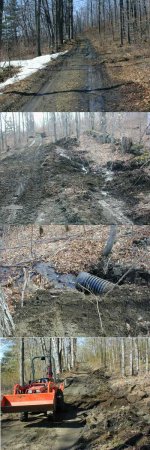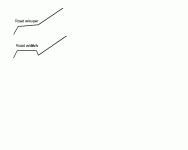hayden
Veteran Member
I've got a mud problem with the road going into my place that I think is similar to several other people. All the guidance I've received suggests its all about getting the water away first, then it's about a road surface, so that's what I've been doing. I've attached some pictures of the mud last spring, trenching along side the road to create a swale for the water, then a culvert pipe to take the water from the uphill side to the down hill side of the road. In the last photo which was a week later, things looked much better.
I still have lots of shaping and grading to do as well as some more trenching, but the acid test will be next spring. For all I know I've made no difference at all.
I still have lots of shaping and grading to do as well as some more trenching, but the acid test will be next spring. For all I know I've made no difference at all.




